Synthesis and Performance Study of a New Ether-Polyalphaolefin Base Oil
Abstract
1. Introduction
2. Materials and Methods
2.1. Materials
2.2. Synthesis of DVE-PAO
2.3. Product Analysis
2.4. Miscibility Test
2.5. Tribological Test
3. Results and Discussion
3.1. Characterization of DVE-PAO
3.2. Effect of Temperature on Copolymerization
3.3. Relationship Between Kinematic Viscosity and Oxidation Resistance of Copolymer
3.4. Comparison of the Physicochemical Properties of DVE-PAO Base Oil with PAO and PAG Base Oils
3.5. Comparison of Tribological Performance of DVE-PAO with PAO, PAG, and DVE-3
4. Conclusions
Supplementary Materials
Author Contributions
Funding
Data Availability Statement
Conflicts of Interest
References
- Liu, Z.; Xue, W.; Shi, J.; Han, S.; Yan, J. Recent advances in polyalkylene glycol base oil. Res. Chem. Intermed. 2024, 50, 1515–1539. [Google Scholar] [CrossRef]
- Shubkin Ronald, L. Synthetic Lubricants and High-Performance Functional Fluids, 1st ed.; Marcel Dekker: New York, NY, USA, 1993; pp. 10l–123. [Google Scholar]
- Leslie, R.R. Synthetics Mineral Oils and Bio-Based Lubricants, 1st ed.; CRC Press: Boca Raton, FL, USA, 2006; pp. 119–138. [Google Scholar]
- Leslie, R.R. Synthetics Mineral Oils and Bio-based Lubricants, 2nd ed.; CRC Press: Boca Raton, FL, USA, 2013; pp. 123–148. [Google Scholar]
- Gangopadhyay, A.; Cuthbert, J. Opportunities and Challenges with Polyalkylene Glycol for Engine Oil Application. Lubricants 2018, 6, 72. [Google Scholar] [CrossRef]
- Totten, G.E.; Webster, G.M.; Bishop, R.J.; Sloan, W.E. Anhydrous Polyalkylene Glycol Hydraulic Fluids (No. 2000-01-2557). In Proceedings of the International Off-Highway & Powerplant Congress & Exposition, Milwaukee, WI, USA, 11–13 September 2000. [Google Scholar]
- Brown, W.L. The Role of Polyalkylene Glycols in Synthetic Metal Working Fluids. Lubr. Eng. 1988, 44, 168–171. [Google Scholar]
- Khemchandani, G.; Greaves, M. Novel polyalkylene glycol-based hydraulic fluids. Iron Steel Tech. 2010, 7, 66–71. [Google Scholar]
- Gajewski, J.B.; Gogowski, M.J. Additives contents in PAG and synthetic motor base oils and their effect on electrostatic phenomena in a rotating shaft-oil-lip seal system. IEEE Trans. Dielectr. Electr. Insul. 2013, 20, 1561–1566. [Google Scholar] [CrossRef]
- Gajewski, J.B.; Głogowski, M.J. Anti-wear additive content in fully synthetic PAO and PAG base oils and its effect on electrostatic and tribological phenomena in a rotating shaft-oil-lip seal system. J. Phys. Conf. Ser. 2013, 418, 012045. [Google Scholar] [CrossRef]
- Gajewski, J.B.; Głogowski, M.J. Influence of additives blended with motor base oils on the braking torque under an auxiliary external DC electric field. J. Electrostat. 2013, 71, 1100–1103. [Google Scholar] [CrossRef]
- Boffa, A.B.; Bidwell, T.R. Wear Control with Dispersants Employing Poly Alpha-Olefin Polymers. U.S. Patent 5972853, 26 October 1999. [Google Scholar]
- Greaves, M.; Zaugg-Hoozemans, E.; Khelidj, N.; van Voorst, R.; Meertens, R. Performance properties of oil-soluble synthetic polyalkylene glycols. Lubr. Sci. 2012, 24, 251–262. [Google Scholar] [CrossRef]
- Greaves, M.; Topolovec Miklozic, K. Film forming behaviour of oil soluble polyalkylene glycols. Ind. Lubr. Tribol. 2015, 67, 133–138. [Google Scholar] [CrossRef]
- Greaves, M. Pressure viscosity coefficients and traction properties of synthetic lubricants for wind turbine gear systems. Lubr. Sci. 2012, 24, 75–83. [Google Scholar] [CrossRef]
- Jackov, T.; Filipovic, J.M.; Petrovic-Jackov, D. Synthetic lubricants based on copolymers of n-butyl methacrylate and α-olefins. Chem. Ind. 2002, 56, 526–528. [Google Scholar] [CrossRef][Green Version]
- Schweißinger, E.C.; Maier, S.K.; Nothdurft, K.; Groß-Onnebrink, Y.; Janssen, D.; Pletsch, H.; Hilf, S.; Kleinschmidt, D.; Babik, S. Acrylate-Olefin Copolymers as High Viscosity Base Fluids. U.S. Patent 11981877, 14 May 2024. [Google Scholar]
- GB/T 265-1988; Petroleum Products–Determination of Kinematic Viscosity and Calculation of Dynamic Viscosity. Standards Press of China (SINOPEC): Beijing, China, 1988.
- GB/T 3535-2006; Petroleum Products–Determination of Pour Point. Standards Press of China (SINOPEC): Beijing, China, 2006.
- NB/SH/T 0193-2022; Lubricanting Oils–Determination of Oxidation Stability–Rotating Pressure Vessel Method. Standards Press of China (SINOPEC): Beijing, China, 2022.
- NB/SH/T 0189-2017; Standard Test Method for Wear Preventive Characteristics of Lubricating Fluid–Four-Ball Method. Standards Press of China (SINOPEC): Beijing, China, 2017.
- Chen, P.; Liu, D.; Wang, X.; Zhang, Q.; Chu, X. Rapid determination of viscosity and viscosity index of lube base oil based on near-infrared spectroscopy and new transformation formula. Spectrochim. Acta Part A Mol. Biomol. Spectrosc. 2023, 287, 122079. [Google Scholar] [CrossRef] [PubMed]
- Verdier, S.; Coutinho, J.A.; Silva, A.M.; Alkilde, O.F.; Hansen, J.A. A critical approach to viscosity index. Fuel 2009, 88, 2199–2206. [Google Scholar] [CrossRef]
- Panwar, P.; Schweissinger, E.; Maier, S.; Hilf, S.; Sirak, S.; Martini, A. Effect of polymer structure and chemistry on viscosity index, thickening efficiency, and traction coefficient of lubricants. J. Mol. Liq. 2022, 359, 119215. [Google Scholar] [CrossRef]
- Dong, S.Q.; Mi, P.K.; Xu, S.; Zhang, J.; Zhao, R.D. Preparation and characterization of single-component poly-α-olefin oil base stocks. Energy Fuel 2019, 33, 9796–9804. [Google Scholar] [CrossRef]
- Singh, H.; Gulati, I.B. Influence of base oil refining on the performance of viscosity index improvers. Wear 1987, 118, 33–56. [Google Scholar] [CrossRef]
- Sharma, B.K.; Adhvaryu, A.; Perez, J.M.; Erhan, S.Z. Effects of hydroprocessing on structure and properties of base oils using NMR. Fuel Process. Technol. 2008, 89, 984–991. [Google Scholar] [CrossRef]
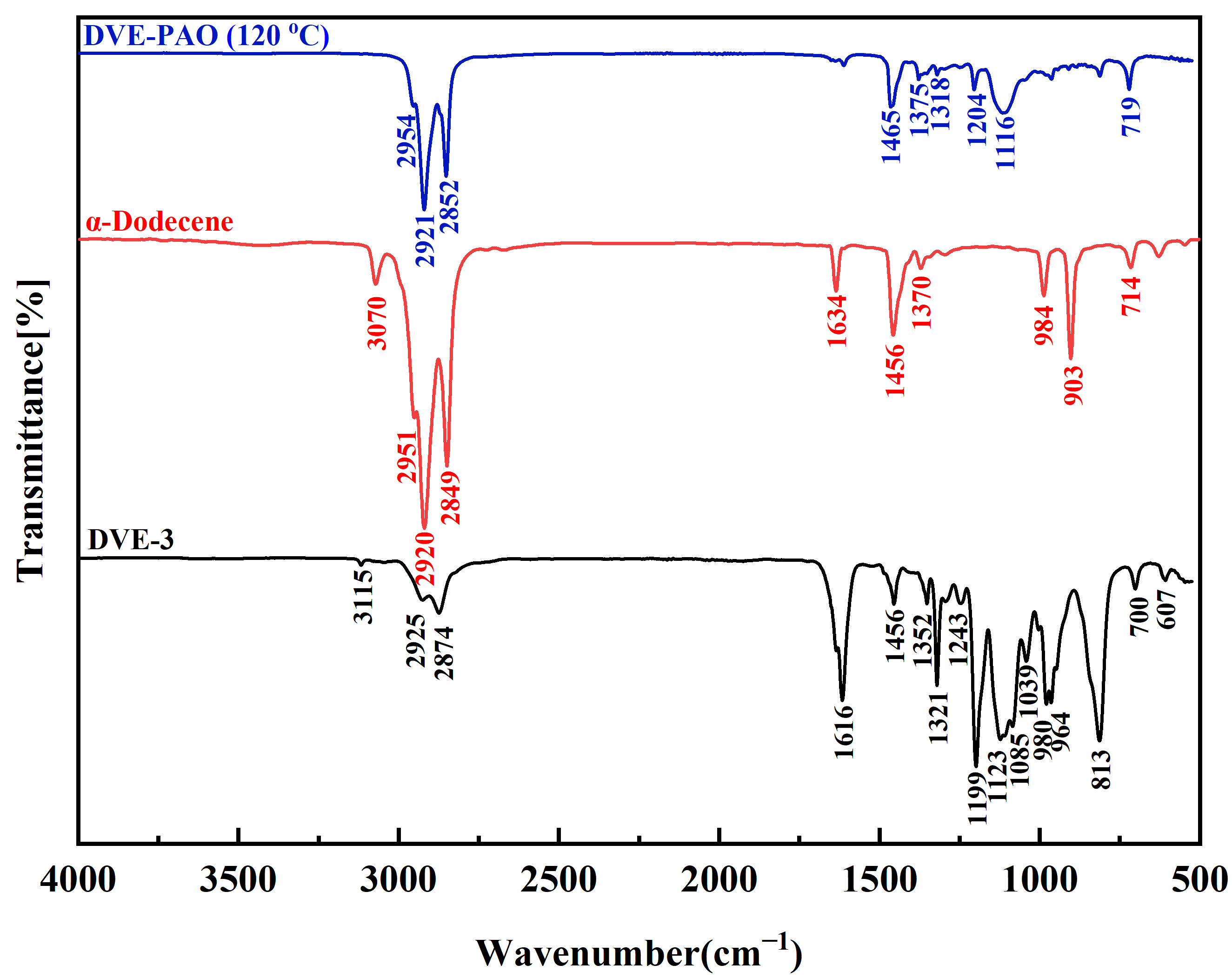
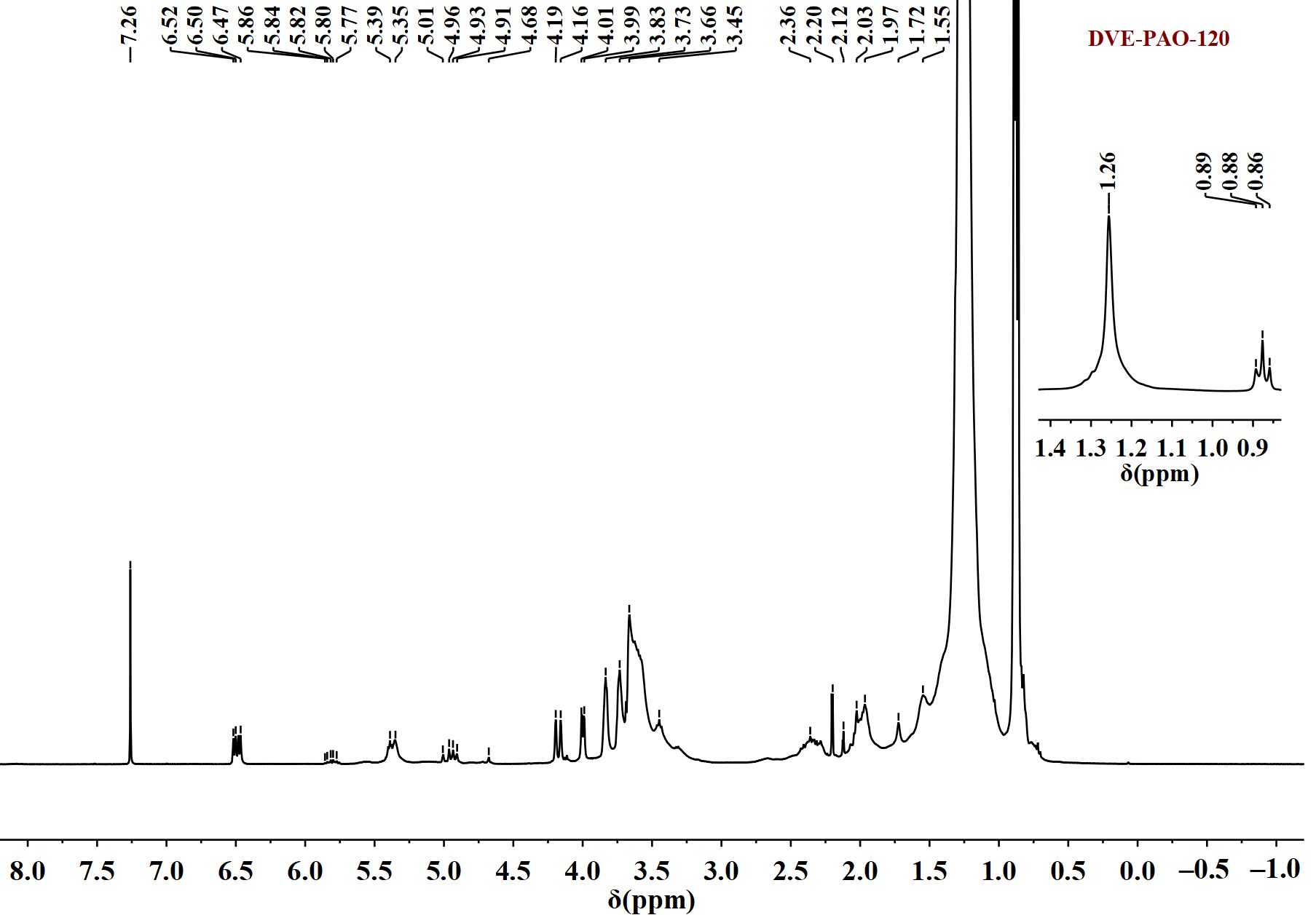

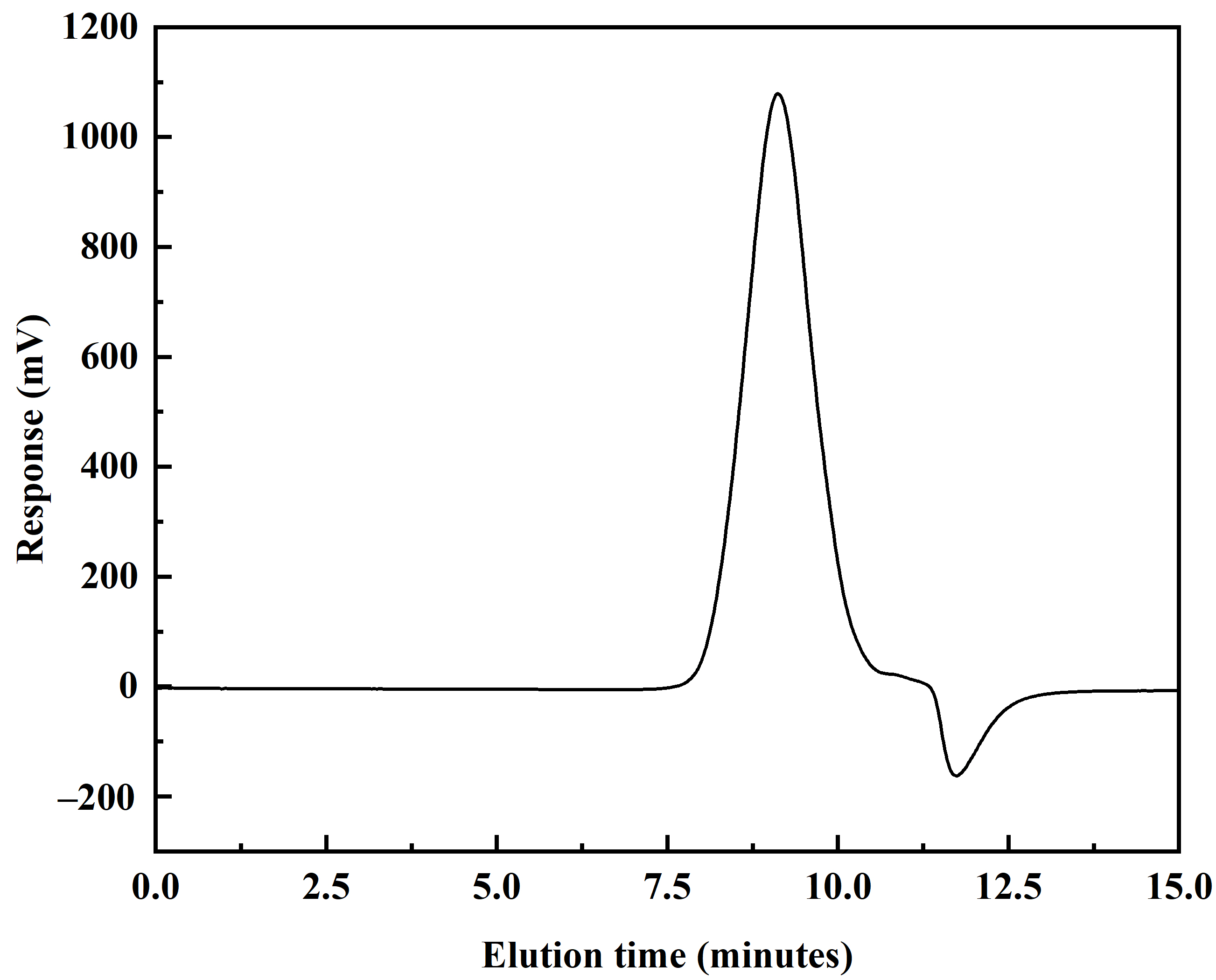
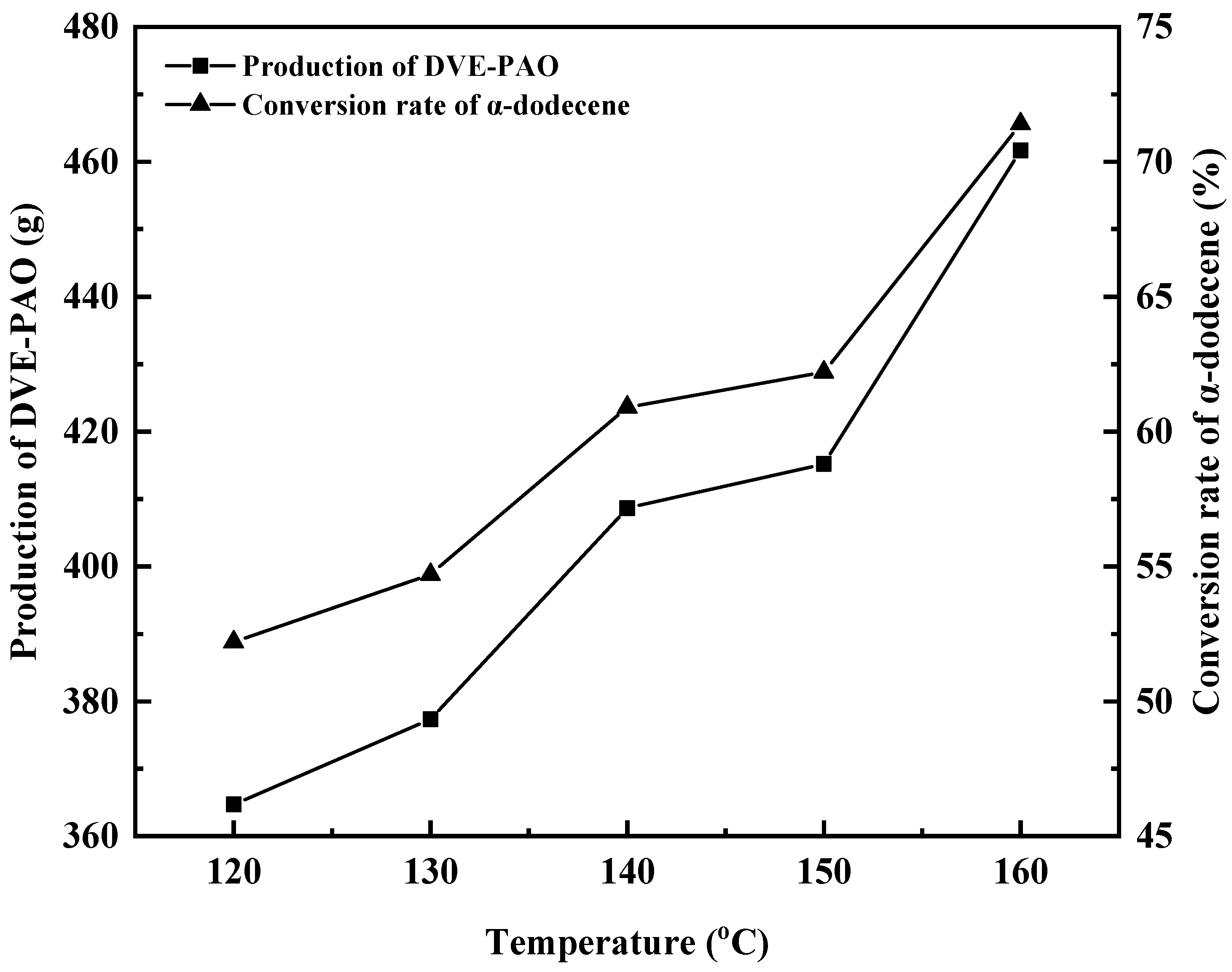
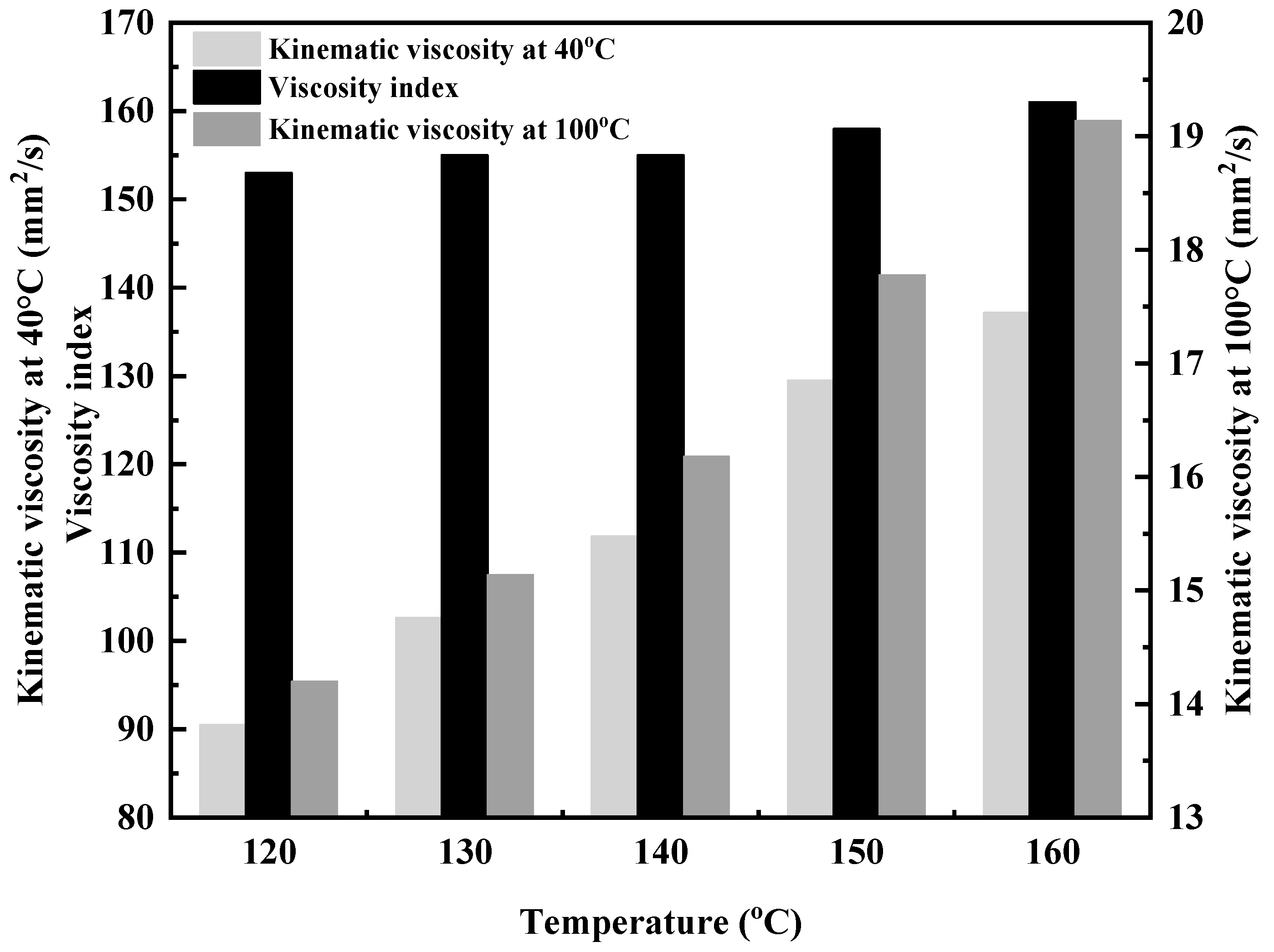
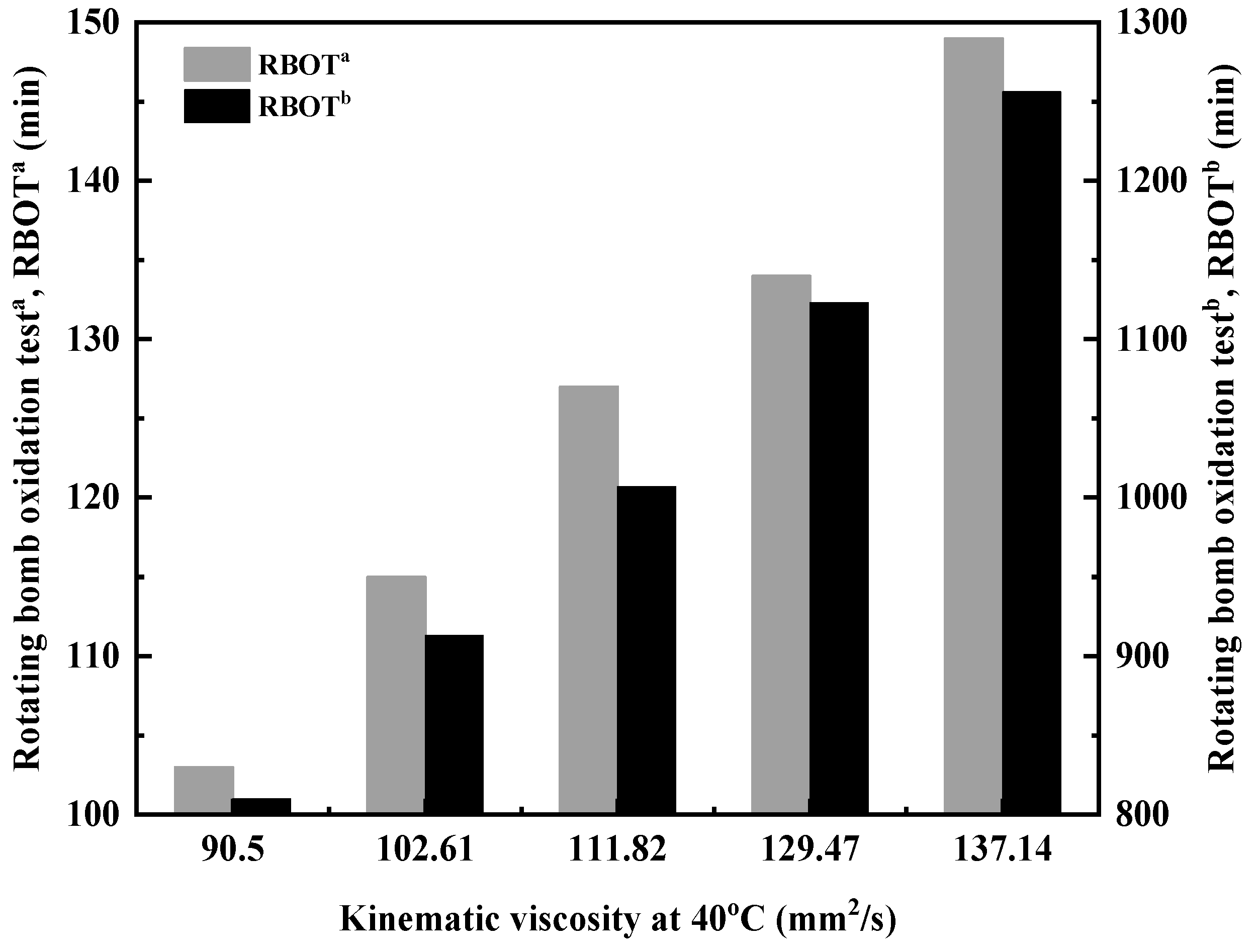

| Sample | Mp Kg·mol−1 | Mn Kg·mol−1 | Mw Kg·mol−1 | Dispersity Index (Ð) |
|---|---|---|---|---|
| DVE-PAO | 2.1 | 1.3 | 2.9 | 2.2 |
| Properties | DVE−PAO | PAO20 | KLP32 | KLP100 | KLP680 | ||||
|---|---|---|---|---|---|---|---|---|---|
| 120 °C | 130 °C | 140 °C | 150 °C | 160 °C | |||||
| Miscibility with mineral oils | √ | √ | √ | √ | √ | √ | × | × | × |
| Miscibility with PAO | √ | √ | √ | √ | √ | √ | × | × | × |
| Miscibility with PAG | √ | √ | √ | √ | √ | × | √ | √ | √ |
| KV40 °C (mm2·s−1) | 90.50 | 102.61 | 111.82 | 129.47 | 137.14 | 130 | 32 | 100 | 680 |
| KV100 °C (mm2·s−1) | 14.20 | 15.14 | 16.18 | 17.78 | 19.14 | 20 | 6.4 | 18 | 105 |
| Viscosity index | 153 | 155 | 155 | 158 | 161 | 140 | 160 | 200 | 250 |
| Pour point (°C) | −35 | −32 | −30 | −29 | −27 | −45 | −50 | −45 | −30 |
| Sample | 1st Ball | 2nd Ball | 3rd Ball | |
|---|---|---|---|---|
| DVE-3 | 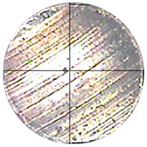 0.866 mm | 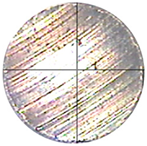 0.878 mm | 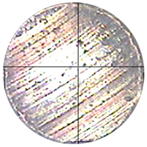 0.885 mm | |
| PAO | 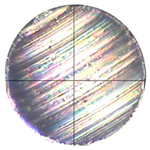 0.880 mm | 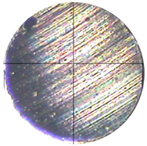 0.856 mm | 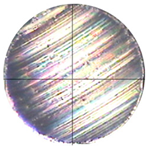 0.842 mm | |
| PAG |  0.564 mm | 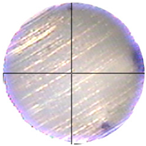 0.542 mm | 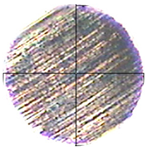 0.564 mm | |
| DVE-PAO | 120 °C | 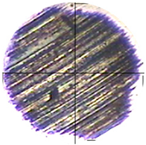 0.525 mm |  0.536 mm | 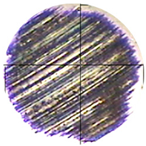 0.494 mm |
| 130 °C |  0.519 mm | 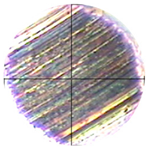 0.486 mm | 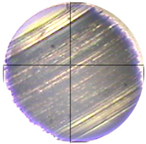 0.530 mm | |
| 140 °C |  0.478 mm | 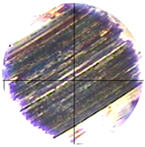 0.481 mm |  0.502 mm | |
| 150 °C | 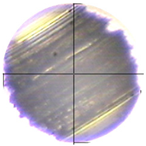 0.495 mm |  0.482 mm | 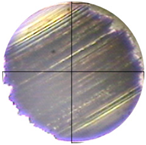 0.505 mm | |
| 160 °C |  0.476 mm | 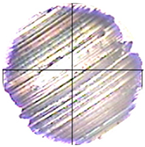 0.501 mm |  0.494 mm | |
| Properties | DVE-PAO | PAO10 | KLP46 | DVE-3 | ||||
|---|---|---|---|---|---|---|---|---|
| 120 °C | 130 °C | 140 °C | 150 °C | 160 °C | ||||
| WSD (mm) | 0.518 | 0.512 | 0.487 | 0.494 | 0.490 | 0.859 | 0.557 | 0.876 |
| Average Friction Force (N) | 2.428 | 2.419 | 2.035 | 2.066 | 2.059 | 2.147 | 3.387 | 2.515 |
| Average COF | 0.049 | 0.049 | 0.042 | 0.042 | 0.041 | 0.044 | 0.069 | 0.051 |
Disclaimer/Publisher’s Note: The statements, opinions and data contained in all publications are solely those of the individual author(s) and contributor(s) and not of MDPI and/or the editor(s). MDPI and/or the editor(s) disclaim responsibility for any injury to people or property resulting from any ideas, methods, instructions or products referred to in the content. |
© 2025 by the authors. Licensee MDPI, Basel, Switzerland. This article is an open access article distributed under the terms and conditions of the Creative Commons Attribution (CC BY) license (https://creativecommons.org/licenses/by/4.0/).
Share and Cite
Huang, L.; Eli, W. Synthesis and Performance Study of a New Ether-Polyalphaolefin Base Oil. Lubricants 2025, 13, 404. https://doi.org/10.3390/lubricants13090404
Huang L, Eli W. Synthesis and Performance Study of a New Ether-Polyalphaolefin Base Oil. Lubricants. 2025; 13(9):404. https://doi.org/10.3390/lubricants13090404
Chicago/Turabian StyleHuang, Lei, and Wumanjiang Eli. 2025. "Synthesis and Performance Study of a New Ether-Polyalphaolefin Base Oil" Lubricants 13, no. 9: 404. https://doi.org/10.3390/lubricants13090404
APA StyleHuang, L., & Eli, W. (2025). Synthesis and Performance Study of a New Ether-Polyalphaolefin Base Oil. Lubricants, 13(9), 404. https://doi.org/10.3390/lubricants13090404




